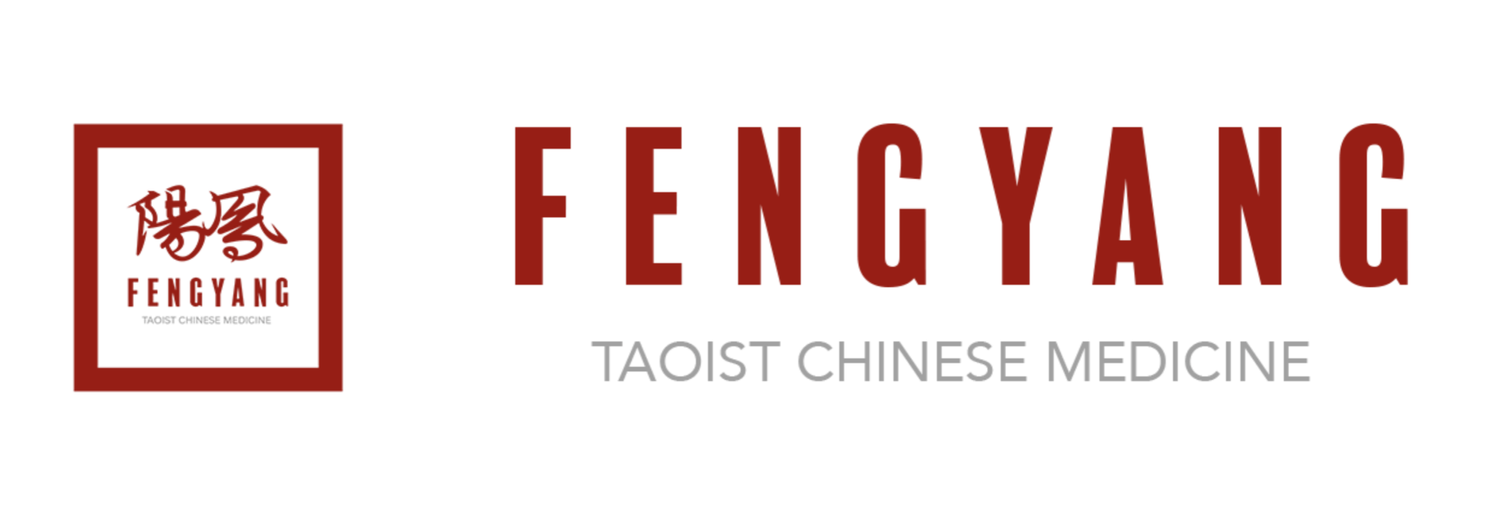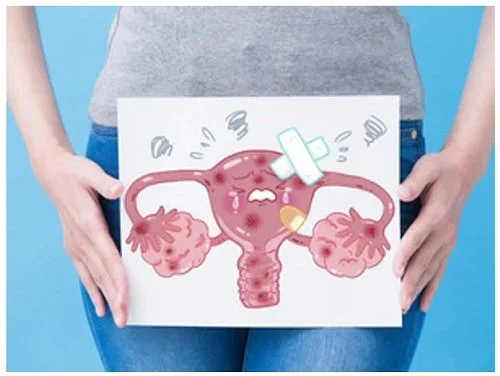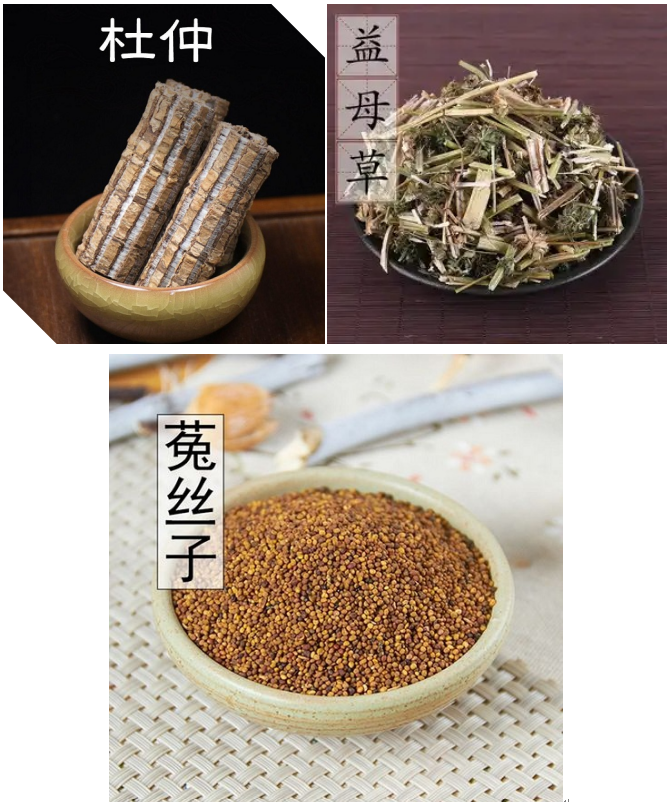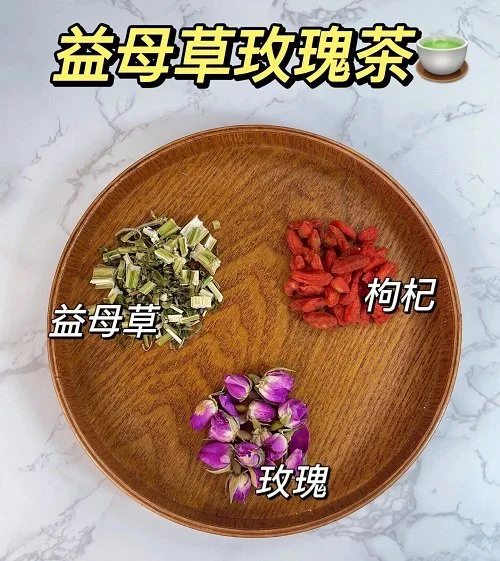Administration Methods and Mechanism of Motherwort (Leonurus japonicus) in Treating Endometriosis
I. TCM Understanding of Endometriosis (EMs)
In TCM theory, endometriosis belongs to the categories of "dysmenorrhea," "abdominal masses (Zhēng Jiǎ)," and "infertility." The core pathogenesis includes:
"Blood stasis obstructing internally, Chong and Ren meridian dysfunction": Poor menstrual flow leads to blood stasis accumulation in the uterus, forming ectopic lesions that cause dysmenorrhea, pelvic masses, and infertility.
Associated patterns: Often accompanied by Qi stagnation, cold congelation, damp-heat, or kidney deficiency, requiring pattern-differentiated treatment.
II. Mechanism of Motherwort in Treating EMs
Motherwort is slightly cold in nature, pungent and bitter in taste, and enters the Liver, Heart, and Bladder meridians. It has the effects of activating blood circulation, regulating menstruation, promoting diuresis, reducing swelling, and relieving pain. Its mechanisms include:
1.Activating Blood and Resolving Stasis, Dissolving Ectopic Lesions
As a key herb for gynecological blood stasis, motherwort enhances uterine contractions, promoting menstrual discharge and reducing retrograde menstruation (a major trigger of EMs).
Modern research: Contains leonurine, which inhibits platelet aggregation, improves pelvic microcirculation, and reduces adhesion and growth of ectopic endometrial tissue.
2.Regulating Menstruation and Alleviating Dysmenorrhea
By promoting blood circulation, it relieves spasmodic menstrual pain ("stagnation causes pain").
Modern research: Motherwort extract modulates prostaglandins, reducing PGF2α (a key factor in dysmenorrhea).
3.Anti-inflammatory and Immunomodulatory Effects
Suppresses inflammatory responses in ectopic endometrial tissue (e.g., IL-6, TNF-α), slowing lesion progression.
III. Pattern Differentiation and Formula Combinations
Tailored combinations based on patient constitution and accompanying patterns:
1.Qi Stagnation and Blood Stasis Type (breast distension before menstruation, stabbing lower abdominal pain)
Combination: Motherwort 30g + Cyperus rhizome (Xiang Fu) 12g + Salvia (Dan Shen) 15g
Action: Moves Qi, activates blood, and soothes Liver Qi stagnation.
2.Cold Congealing and Blood Stasis Type (cold-type menstrual pain, relieved by warmth)
Combination: Motherwort 30g + Mugwort leaf (Ai Ye) 10g + Cinnamon bark (Rou Gui) 6g
Action: Warms meridians, dispels cold, and resolves stasis.
3.Kidney Deficiency with Blood Stasis Type (sore lower back, scanty menstruation)
Combination: Motherwort 20g + Cuscuta seed (Tu Si Zi) 15g + Eucommia bark (Du Zhong) 12g
Action: Tonifies kidneys, activates blood, and regulates Chong and Ren meridians.
IV. Specific Administration Methods
1.Menstrual Phase Usage (Critical Period)
Method: Decoct 30-50g motherwort with 20g brown sugar for 30 minutes. Take from 3 days before menstruation until day 3 of menstruation, once daily.
Purpose: Promotes menstrual discharge, reduces retrograde flow, and alleviates dysmenorrhea.
2.Non-Menstrual Phase Regulation
Method: 15-30g motherwort combined with other pattern-specific herbs (as listed above), taken 3-4 times weekly for 3 menstrual cycles.
Purpose: Gradually resolves stasis and shrinks ectopic lesions.
3.Topical Application (For Pelvic Masses)
Method: Mix 50g motherwort powder with rice wine and apply to lower abdomen daily (avoid during menstruation).
V. Modern Pharmacological Evidence
Inhibits Endometrial Cell Proliferation: Downregulates VEGF (vascular endothelial growth factor), reducing blood supply to ectopic lesions.
Modulates Estrogen Levels: Balances ERα/ERβ receptor expression, curbing excessive endometrial growth.
Anti-Adhesion Effects: Reduces pelvic fibrosis (animal studies show 40% lower adhesion rates).
VI. Precautions
1.Contraindications:
Use cautiously in patients with heavy menstrual bleeding (may increase flow).
Strictly contraindicated during pregnancy (strong blood-activating effect).
2.Treatment Duration: Minimum 3-6 menstrual cycles, with ultrasound monitoring.
3.Combination Therapy: Severe cases require integrated Western treatment (e.g., GnRH-a or surgery).
VII. Summary
Motherwort addresses EMs through "menstrual regulation + anti-inflammatory mass resolution," aligning with its "blood stasis obstruction" pathogenesis. It is particularly suitable for mild-to-moderate cases or postoperative adjuvant therapy. Key points:
High dose (30-50g) during menses to expel stasis.
Low dose (15-30g) long-term to resolve stasis.
Strict pattern differentiation for enhanced efficacy.
Recommendation: Please consult a TCM practitioner for pattern differentiation and personalized treatment plans.
Case Studies and Dietary Therapy for Endometriosis Treatment
I. Clinical Case Analysis
Case 1: Qi Stagnation and Blood Stasis Type ▸ Patient: 32-year-old female, unmarried
▸ Chief complaint: Progressive dysmenorrhea for 3 years, significant breast distension before menstruation
▸ Examination: Dark red tongue with petechiae, wiry and choppy pulse
▸ Ultrasound: Left ovarian chocolate cyst (3.8×4.2cm)
▸ Treatment plan:
Menstrual phase formula: Motherwort 40g + Cyperus rhizome 15g + Corydalis 12g + brown sugar 20g
Non-menstrual formula: Bupleurum 10g + Angelica sinensis 12g + Motherwort 20g + Salvia 15g
Outcome: After 4 menstrual cycles, dysmenorrhea reduced by 50%, cyst shrank to 2.5×3.0cm
Case 2: Cold Congealing and Blood Stasis Type
▸ Patient: 28-year-old, 1 year postpartum
▸ Chief complaint: Cold-type abdominal pain during menstruation, relieved by warmth
▸ Examination: Pale-purple tongue with white coating, deep and tight pulse
▸ Treatment plan:
Menstrual formula: Motherwort 30g + Mugwort leaf 10g + Fennel seed 6g + fresh ginger 5 slices
Topical application: Motherwort powder 50g + coarse salt hot compress on lower abdomen
Result: After 3 cycles, cold pain essentially resolved
II. Pattern-Based Dietary Therapy
1. Qi Stagnation and Blood Stasis Diet
Rose Motherwort Tea:
▸ Ingredients: Rose buds 5g + Motherwort 15g + Tangerine peel 6g
▸ Preparation: Steep in boiling water as tea (start 1 week before menstruation)
▸ Benefits: Soothes liver qi, activates blood circulation
2. Cold Congealing and Blood Stasis Diet
Ginger-Date Uterus-Warming Porridge:
▸ Ingredients: Motherwort 10g (wrapped) + Fresh ginger 15g + Red dates 6 pieces + Rice 100g
▸ Preparation: Cook as congee (consume morning and evening during menstruation)
▸ Benefits: Warms meridians, dispels cold, resolves stasis
3. Kidney Deficiency with Blood Stasis Diet
Black Bean Motherwort Soup:
▸ Ingredients: Black beans 50g + Motherwort 20g + Goji berries 15g + Pork ribs 200g
▸ Preparation: Slow-cook as soup (consume 3 times weekly)
▸ Benefits: Tonifies kidneys, nourishes essence, regulates menstruation
III. Daily Lifestyle Recommendations
1.Exercise Therapy:
Menstrual phase: Gentle walking (promotes menstrual flow)
Non-menstrual: Yoga "Butterfly Pose" (improves pelvic circulation)
2.Acupressure:
Sanyinjiao (SP6) + Xuehai (SP10) (5 minutes daily)
Add Taichong (LR3) before menstruation (regulates liver qi)
3.Dietary Restrictions:
Cold foods: Iced drinks, watermelon, crab
Irritants: Coffee, alcohol
High-estrogen foods: Royal jelly, snow frog oil
IV. Therapeutic Evaluation Metrics
1.Subjective indicators:
Changes in VAS pain score
Reduction in menstrual clots
2.Objective indicators:
Ultrasound every 3 months (cyst size monitoring)
CA125 level tracking
V. Important Notes
Dietary therapy should complement herbal treatment, not replace medication
Seek immediate medical attention if experiencing:
Sudden severe abdominal pain
Heavy menstrual bleeding .




